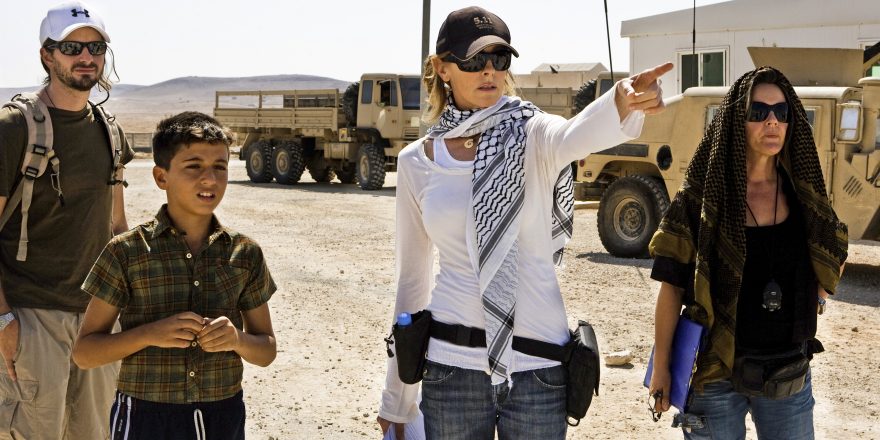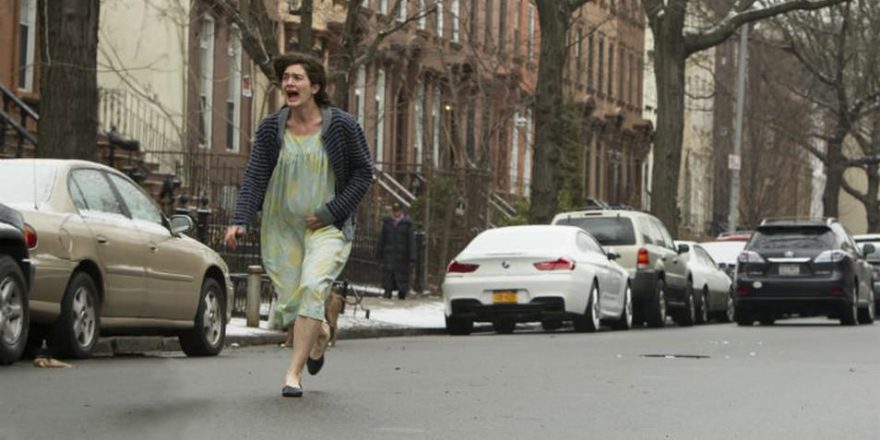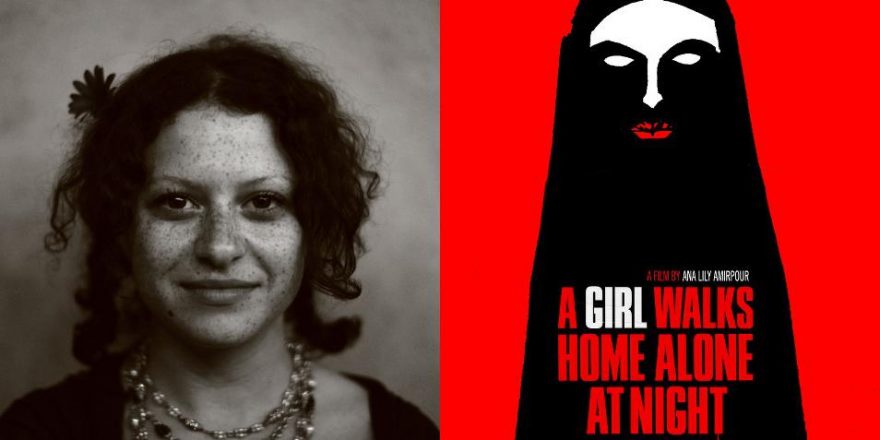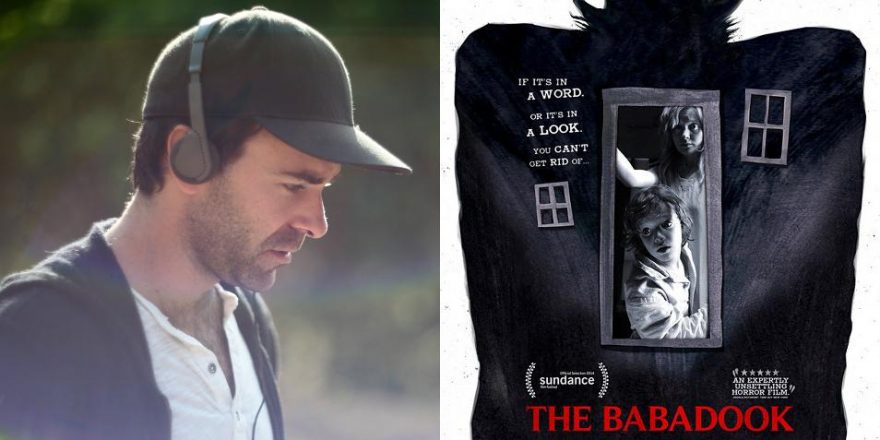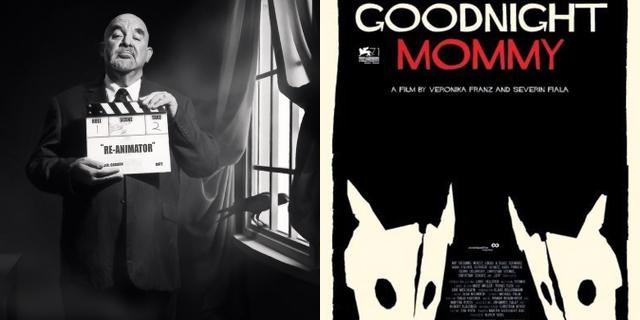When I was five years old, I got hit by an ice cream truck and was put in a full body cast. Per my request, my brother made a drawing of Diana Prince as Wonder Woman across the chest. My first lunch box chronicled the life of Jaime Sommers as the Bionic Woman. The first film I made of any note introduced a grrrl superhero with toxic bodily fluids called White Trash Girl.
For many years now, I have aligned myself with representations of epic women and I consider my first film about White Trash Girl, The Devil Inside, a mini action movie. This past summer, I directed two films: one included a 12-year-old girl bludgeoning a villain with a hatchet attached to a prosthetic arm, and the other included scenes which required stunt drivers, stunt performers, firemen, a scissor lift and two full camera rigs. I was anxious heading into these complicated production days, but the experience was a game changer. Although the trajectory from White Trash Girl to these most recent films has included more drama than action, I am currently committed to getting more women, including myself, attached to a type of project not often associated with female directors: the big-budget action film.
As a consumer, I watch my fair share of action films. They are my go-to on a Friday night or a rainy Sunday or on a transatlantic flight (and there are a lot of these flights). As a filmmaker, I want access to this genre, and it should be a given that most women directors do too. Connecting to audiences with small, strong, character-driven stories is important and rewarding for me, but a different kind of reward comes from being in command of a huge exploding set and watching choreography come together in a sequence. I want in on the action.
It would seem that since Kathryn Bigelow – the most well-known American female director and the only woman to win an Oscar for directing – makes epic action films, the studios might be hiring women to direct at least a few of the huge projects they put out each year. Of the 20 highest-grossing films released in 2015, only two (Pitch Perfect 2 and Fifty Shades of Grey) were directed by women. This is not about who can direct a film into a top-grossing position, this is about who is being hired to direct a film that the studios have already determined will be hugely successful. Why aren’t more blockbusters being directed by women?
Last year, Colin Trevorrow (Jurassic World, Star Wars Episode IX) offered an explanation. He said: “I want to believe that a filmmaker with both the desire and ability to make a studio blockbuster will be given an opportunity to make their case … I stress desire because I honestly think that’s a part of the issue. Many of the top female directors in our industry are not interested in doing a piece of studio business for its own sake. These filmmakers have clear voices and stories to tell that don’t necessarily involve superheroes or spaceships or dinosaurs…”
This is a complicated insult. Trevorrow is not only denying that the gender-based blockbuster gap is about lack of opportunity, he is also saying that because the nature of the blockbuster is supposedly anti-story, uninspired that means the best person for this type of dumbed-down job is a man. Is he saying female directors cannot be entertaining and male directors cannot be sensitive? This take is essentialist and wrong.
A woman can make a remarkable first film that wins lots of awards, includes breakout performances, etc., and still not be offered more.Access to the action film (or the big-budget movie, period) is not an egalitarian meritocracy, nor is it as complicated as Trevorrow suggests. I think many producers (both male and female) do not trust a woman’s ability to deliver a certain kind of film – a “masculine” film perhaps? Recently a producer asked me, with great hesitation, if I would ever consider directing a cop show. My response was an immediate and enthusiastic “Yes, of course.” (I am a true-crime junkie.) I wonder, would any male directors get asked the same question with the same hesitant expectation? It’s as though men are assumed to be willing and able to direct any project, and women only some.
The projects men are first in line for also include “feminine” films such as Bridesmaids and the recent reboot of Ghostbusters, both of which were directed by Paul Feig. Other recent notable films like Carol (Todd Haynes), Joy (David O. Russell), Trainwreck (Judd Apatow) and Room (Lenny Abrahamson) are also female stories directed by men. Although men have directed some of the best feminist action films – The Terminator, Thelma and Louise, Max Mad: Fury Road, Lucy, The Girl With the Dragon Tattoo – it seems grossly unfair that they have access to all the stories, while women, almost without exception, only seem to have opportunities to tell those that have limited potential in terms of scope and budget.
I imagine every female director would like the opportunity to make a BIG movie; I know I certainly would. It does seem, however that a specific kind of female director has access to these gigs: Jodie Foster, Sam Taylor-Johnson, Angelina Jolie, Elizabeth Banks, Sofia Coppola, etc. Women need more than willingness and ability to gain access to the blockbuster. I am not saying that if you are a woman, it helps to be famous and attractive, but it sure seems to help to be famous and attractive.
Some of my favorite recent films are action thrillers all directed by women: A Girl Walks Home Alone at Night, The Babadook, Goodnight Mommy, etc. But these films are not blockbusters. Curious to note, seven of the 20 films on an IMDb user list of great action films directed by women are by Kathryn Bigelow. She, and only she, has been consistently trusted with big budgets. The director-for-hire gender discrepancy is not about audiences, ability or box office returns. It’s about trust.
Examining the trajectory of several recently successful male directors reveals a relatively fast track from first short film or ultra low-budget indie feature to full-on blockbuster. Colin Trevorrow made Safety Not Guaranteed in 2012 for $750,000 and turned around and made Jurassic World in 2015 for $150 million. Ryan Coogler directed Fruitvale Station in 2013 for $900,000 and in 2015 made Creed for $173.6 million. Next up for him is the Marvel blockbuster Black Panther, slated for release in 2018.
Ava DuVernay, the award-winning director of films such as Middle of Nowhere and Selma, was offered the job of directing Black Panther prior to Coogler. The story became big news when DuVernay passed on the film, because women directors almost never get these opportunities, let alone turn them down. A much more typical story is that of Debra Granik, who in 2010 made Winter’s Bone, with Jennifer Lawrence in a star-making performance. The film was nominated for an Oscar and grossed $6.5m from a budget of $2 million. Despite this success, Granik’s only subsequent film is a documentary from 2014 called Stray Dog, which got only a very small release. Similarly Patty Jenkins, who made her feature debut in 2003 with Monster, which won Charlize Theron an Oscar for Best Actress, had to wait more than a decade before directing her second film, the forthcoming big-screen adaptation of Wonder Woman.
Women have to work much harder for the next film and the bigger budget. A man can make an average first film and land a subsequent film with a much larger scope and budget. A woman can make a remarkable first film that wins lots of awards, includes breakout performances, etc., and still not be offered more. She is not immediately trusted to deliver another remarkable film and certainly not a blockbuster.
Me and most of my female filmmaking friends are taking the exhausting option of bypassing the system. We have continued to write scripts and direct films that fit within the limits of our budgets and resources. We are clever and scrappy, not unlike the action heroes of the projects we want direct access to, and we demand change. Studios and producers should commit to hiring a certain percentage of female directors each year, so that women have the same opportunities as men to gain the studios’ trust and have their excellence rewarded. Women want and need to be in charge of blockbusters. I can imagine the next James Bond or Mad Max or Skywalker under the direction of a woman – but I don’t just want to see that film, I want to make that film.


